1592026601 XWi70K STD FULL EN r1.6 2022.07.29.docx XWi70K 1/15
XWi70K
ADVANCED ENERGY MANAGEMENT CONTROLLER
FW REL. 24.5
1 GENERAL WARNING.................................................................................................................. 1
2 GENERAL DESCRIPTION .......................................................................................................... 1
3 FIXED SPEED COMPRESSOR CONTROL ............................................................................... 1
4 DEFROST .................................................................................................................................... 1
5 FAN MANAGEMENT ................................................................................................................... 1
6 EVAPORATOR FAN CONTROL ................................................................................................. 2
7 CONDENSER FAN CONTROL ................................................................................................... 2
8 AUXILIARY REGULATORS ........................................................................................................ 2
9 ANALOGUE OUTPUTS ............................................................................................................... 2
10 VARIABLE SPEED DRIVE CONTROL ....................................................................................... 2
11 SPECIAL FUNCTIONS ................................................................................................................ 3
12 KEYBOARDS ............................................................................................................................... 3
13 CONTROLLER INTERFACE ....................................................................................................... 4
14 PROGRAMMING MODE ............................................................................................................. 4
15 PARAMETER LIST ...................................................................................................................... 4
16 DIGITAL INPUT............................................................................................................................ 7
17 HOW TO INSTALL AND MOUNT................................................................................................ 8
18 ELECTRICAL CONNECTIONS ................................................................................................... 8
19 TTL/RS485 SERIAL LINE ............................................................................................................ 8
20 HOW TO USE OF THE “HOT KEY” ............................................................................................ 8
21 INTERNAL MEMORY .................................................................................................................. 8
22 ALARM SIGNALS ........................................................................................................................ 8
23 WIRING DIAGRAMS .................................................................................................................... 9
24 DEFAULT PARAMETER MAPS .................................................................................................. 9
25 TECHNICAL DATA .................................................................................................................... 15
1 GENERAL WARNING
1.1 PLEASE READ BEFORE USING THIS MANUAL
• This manual is part of the product and should be kept near the instrument for easy and quick
reference.
• The instrument shall not be used for purposes different from those described hereunder. It cannot
be used as a safety device.
• Check the application limits before proceeding.
• Dixell S.r.l. reserves the right to change the composition of its products, even without notice,
ensuring the same and unchanged functionality.
1.2 SAFETY PRECAUTIONS
• Check the supply voltage is correct before connecting the instrument.
• Do not expose to water or moisture: use the controller only within the operating limits avoiding
sudden temperature changes with high atmospheric humidity to prevent formation of condensation
• Warning: disconnect all electrical connections before any kind of maintenance.
• Fit the probe where it is not accessible by the End User. The instrument must not be opened.
• In case of failure or faulty operation send the instrument back to the distributor or to “Dixell S.r.l.”
(see address) with a detailed description of the fault.
• Consider the maximum current which can be applied to each relay (see Technical Data).
• Ensure that the wires for probes, loads and the power supply are separated and far enough from
each other, without crossing or intertwining.
• In case of applications in industrial environments, the use of mains filters (our mod. FT1) in parallel
with inductive loads could be useful.
2 GENERAL DESCRIPTION
Model XWi70K is a microprocessor-based controller suitable for applications on medium or low
temperature refrigerating units. It must be connected by means of a two-wire shielded twisted cable (
1mm) at up to 30 meters to the keyboard CH620, T620T/H or T820T/H. It is provided with five relay
outputs to control compressor, defrost (which can be either electrical or hot gas), evaporator and
condenser fans and light or alarm. It is also provided with 4 NTC or PT1000 probe inputs. It has a both
a frequency output and a serial port which can be used to control variable speed compressors. A couple
of analogue outputs (4-20mA or 0-10Vdc) and a master 2-wire RS485 output for serial controlled
ventilator complete the HW resources.
The HOTKEY I/O port allows connecting the unit, by means of the external module XJ485-CX, to a
network line ModBUS-RTU compatible such as an X-WEB monitoring system. With the HOTKEY port
it is possible to modify the configuration of the controller (by using the Wizmate Progtool Kit).
The instrument is fully configurable and it can be easily programmed through an external keyboard.
3 FIXED SPEED COMPRESSOR CONTROL
The regulation uses the temperature measured by the regulation probe with a positive differential from
the set point: if the temperature increases and reaches set point plus differential the compressor is
started and then turned off when the temperature reaches the set point value again. In case of any
regulation probe fault, the compressor management will switch to fixed ON/OFF time mode, as set in
the parameters Con and CoF.
3.1 DOUBLE FIXED SPEED COMPRESSOR CONTROL
The controller can drive double compressor circuits. To do this, a couple of relays need to be properly
configured: oAx=CP1 and oAy=CP2. (do not use oA5 for compressor management). The parameters
used for this kind of regulation are the following:
The second compressor output is activated by following the 2CC parameter:
- If 2CC=FUL then in parallel with the relay of the first compressor (CP1), with a possible
delay as set in the AC1 parameter. Both compressors are switched off at the same time.
- If 2CC=HAF then only if the temperature T>SET+HY+HY1. The delay AC1 is always
respected. The second compressor is deactivated when T<SET+HY.
With parameter rCC it is possible to enable the compressor rotation function: the activation of the first
and the second compressor will be alternated to equalize the number of working hours of both of them.
In case of hot gas defrost operation, it is possible to select if one or both compressors will be used.
3.2 PULL DOWN
When defrost is not in progress, it can be activated by keeping the UP button pressed for 3 sec. The
compressor will operate to reach the CCS set point by the time set through the CCt parameter. The
cycle can be terminated before the end of the CCt time by using the same activation button (keeping
the UP pressed for 3 sec when PULL DOWN is running)
4 DEFROST
Two defrost modes are available through the tdF parameter: defrost through electrical heater
(tdF=EL) and hot gas defrost (tdF=in).
The defrost interval depends on the presence of the RTC (optional). The internal RTC is controlled by
means of the EdF parameter:
- EdF=in: the defrost is made every idF time – standard way for controller without RTC.
- EdF=rtC: the defrost is real time controlled, depending on the day enabled in the parameters
dd1…dd7 and the hours set in the parameters Ld1...Ld6.
Other parameters are used to control defrosting cycles: the maximum length (MdF) and defrosting
modes: timed or controlled by the evaporator’s probe (P2P).
At the end of defrost dripping time is started, its length is set in the Fdt parameter. With Fdt=0 the
dripping time is disabled.
4.1 SYNCHRONIZED DEFROST
This defrost function requires:
- To set a digital input of any controller as ixF=dEF
- To connect (by wire) all digital inputs set as ixF=dEF
A maximum number of 20 controllers can be used in this configuration.
The Synchronized defrost mode is enabled by par. SYd=SYn. After any defrost request (received by
RTC, timed by par. idF, manually by defrost button or by digital input set as dEF), all controllers will
activate their own defrost phase. The first controller which ends its defrost phase will release the defrost
line and load its dripping time. At the end of the dripping time the normal regulation will restart.
The other controllers follow the same logic.
4.2 DESYNCRONIZED DEFROST
This defrost function requires:
- To set a digital input of any controller as ixF=dEF
- To connect (by wire) all digital inputs set as ixF=dEF
A maximum number of 20 controllers can be used in this configuration.
The De-Synchronized defrost mode is enabled by par. SYd=nSY. After any defrost request (received
by RTC, timed by par. idF, manually by defrost button or by digital input set as dEF), all controllers will
load a random delay. The first controller which ends the random delay will retain the ixF=dEF line to
signal to the other controllers that they have to wait before starting their own defrost phases. When the
first controller ends its defrost phase, it will release the ixF=dEF line. The other ones will repeat the
same procedure. The total defrost phase will end when all controllers complete their own defrost phases.
NOTES:
- take care about the time available to complete the defrost phase. It must be used for selecting
the proper MdF value
- all controllers in waiting mode will keep on the normal regulation
4.3 RANDOM DEFROST
A random defrost mode can be enabled by par. Syd=rnd. After any defrost request (received by RTC
or timed by par. idF) a random delay will be added. At the end of the added delay the defrost will start.
The random function lead to desynchronize the start of the defrost phases in those cases where more
than a cabinet is installed in the same “island”. The maximum defrost delay is linked to the following
parameters:
- Mdf=maximum time for any defrost
- ndE=delay multiplier
by the following formula:
MAX_DEFROST_DELAY = Mdf*ndE (min)
For example: if ndE=10 and Mdf=20 min, this means that the total interval of time used by any device
for complete its defrost phase is 200 min (worst case).
NOTE:
- take care about the interval of time available for defrost. It must be used for selecting both MdF
and ndE values
- the higher is the ndE value and the better is the result in terms of desynchronization. On the
other side, the longer will be the total interval of time required to complete defrosts
5 FAN MANAGEMENT
The controller can manage the following type of fans:
- Fixed speed fans (oAx=FAn, Cnd)
- Variable speed fans with 0-10V or 4-20mA control signal (1Ao or 2Ao=FAn, Cnd)
- Variable speed fans with Modbus control signal (EBM models only)
5.1 MODBUS FAN SUPPORTED
It is possible to use up to 4 fans with EBM Modbus communication protocol. The following parameters
need to be properly configured:
- S00: number of condenser fan controlled via Modbus
- C01 to C04: serial address for condenser fans
- vdF: serial output for fan management enabled
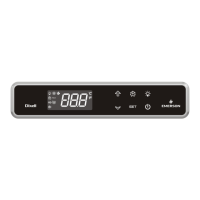
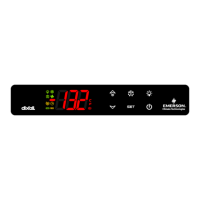
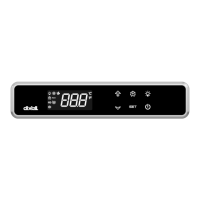
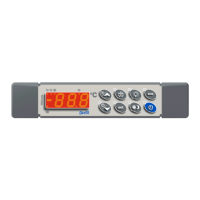
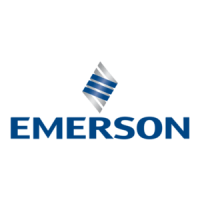

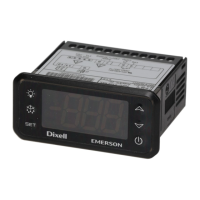
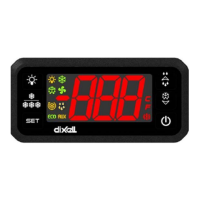
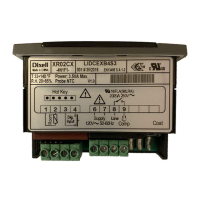
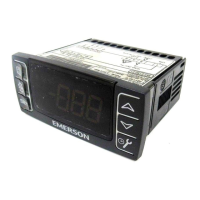
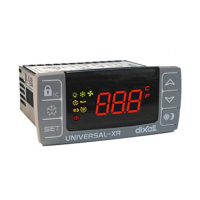
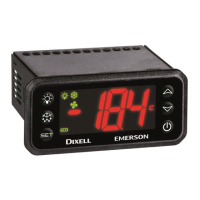

